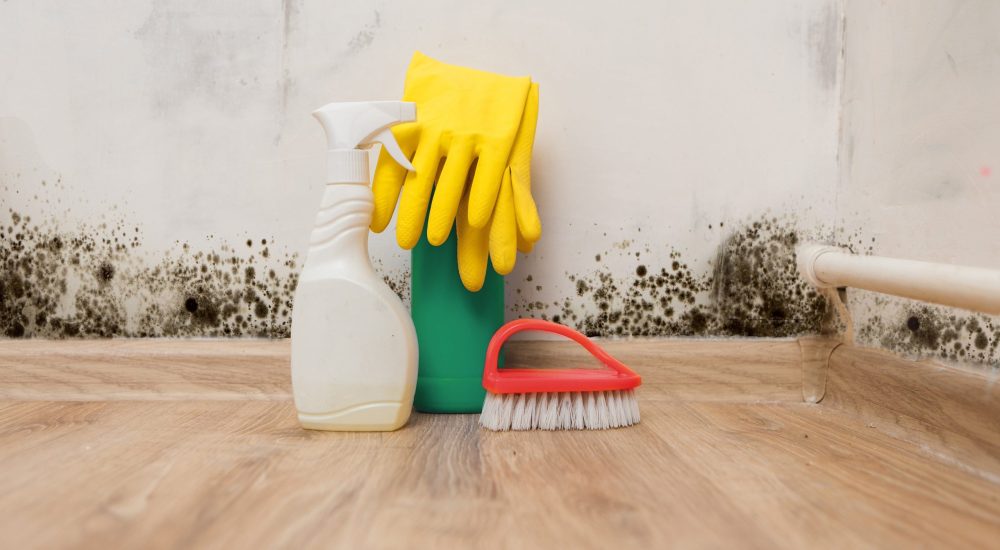
How Improving Your Indoor Air Quality Can Improve Your Health
We often imagine smog-filled cities or industrial smokestacks when considering air pollution. However, did you know that the air inside our homes, offices, and schools can be more polluted than outdoor air?
Poor indoor air quality, caused by pollutants like mold spores, pet dander, dust mites, tobacco smoke, and certain household products, can lead to various health problems. The effects range from immediate reactions like allergies and asthma to long-term complications like respiratory diseases, heart disease, and even cancer.
Furthermore, indoor air quality also impacts our cognitive function. Studies have shown that poor indoor air quality can significantly decrease productivity and concentration, affecting our ability to perform tasks efficiently.
Providing insight into the importance of indoor air quality, this blog post will equip you with knowledge about the impact of IAQ on our health, resources for more information, expert advice and recommendations, and tips to stay informed on your home’s air quality. Learn how improving indoor air quality can significantly boost your health and well-being.
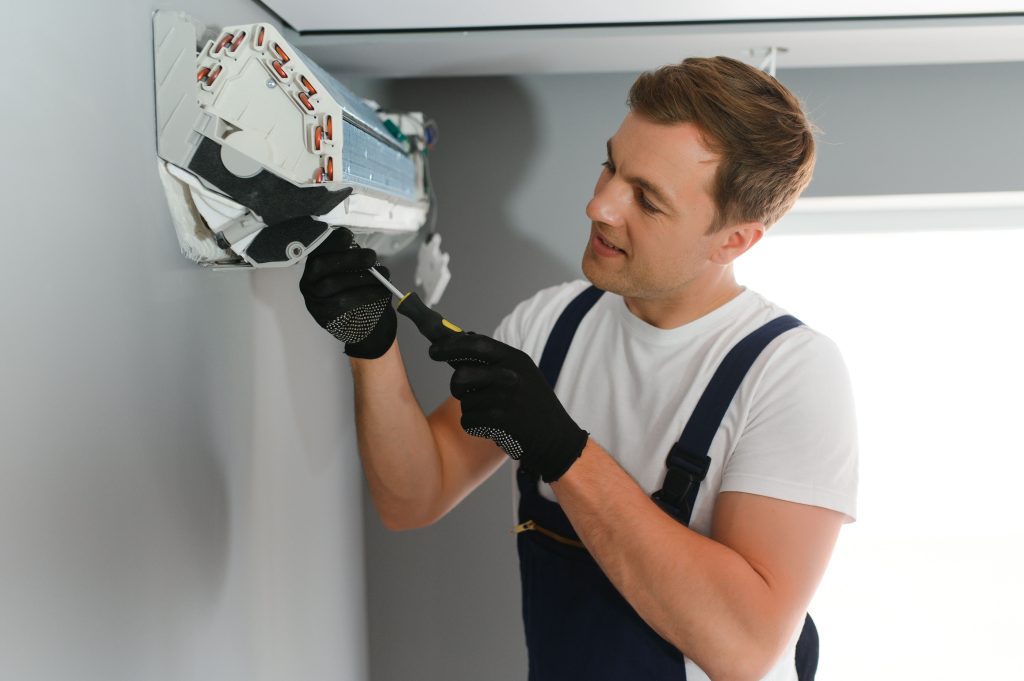
Understanding Indoor Air Quality
A ‘pollutant’ is a substance introduced to the environment responsible for causing adverse change. Pollutants typically involve airborne substances that can endanger occupational safety and health. The indoor environment typically contains numerous pollutants invisible to the naked eye. These air pollutants can come from a variety of sources.
Common pollutants include Volatile Organic Compounds (VOCs) emitted from products like paints, cleaning supplies, pesticides, building materials, and office equipment. Biological pollutants such as mold, pollen, pet dander, and dust mites can also significantly deteriorate indoor air quality.
Indoor air pollution is a major concern worldwide, contributing to multiple health problems such as allergies, respiratory issues, and weakened immune systems. In fact, the Environmental Protection Agency (EPA) cites that indoor air quality is often 2-5 times worse than outdoor air quality.
This means it’s crucial to take measures to improve the IAQ in our living and working spaces to maintain good health and well-being.
Detecting Indoor Air Pollution
Knowing about indoor air pollution is just the tip of the iceberg; detecting it in your indoor spaces is crucial. The common symptoms of poor indoor air quality might include headaches, fatigue, shortness of breath, hypersensitivity, allergies, sinus congestion, coughing and sneezing, dizziness, and nausea.
However, these symptoms might mirror those of common colds or other viral diseases. Thus, it is crucial to seek professional help to ensure the health of your indoor environment. A professional indoor air quality service can measure the levels of pollutants and provide actionable recommendations to improve your indoor ambiance. Remember, a better understanding of air quality can prevent health problems and improve overall wellness.
While everything looks clean and sanitized indoors, it doesn’t always mean the air you breathe is purely clean. Maintaining high-quality indoor air quality pivots around understanding pollutants, their sources, and detection methods.
The Hazards Of Poor Indoor Air Quality: Identifying Indoor Air Problems
Poor indoor air quality poses a serious hazard to our overall wellness. Besides minor nuisances like unpleasant odors or stuffy air, significant air quality problems can disrupt our general health. The indoor environment is often dominated by indoor air pollutants such as dust, mold, chemicals, and allergens; many among them are often eye-opening revelations for even the complacent.
The Occupational Safety and Health Administration (OSHA) underlines how crucial an ideal air exchange rate is for indoor environments. Air quality within and around buildings is a matter of concern. Balancing the right amount of outdoor air coming indoors is key – too little can increase indoor pollutant levels by not diluting emissions from indoor sources; too much can be wasteful.
Impact Of Indoor Air Quality On Your Health
The American Lung Association points out that exposure to indoor air pollution can induce immediate reactions such as irritation of the eyes, inhalation issues, and headaches. Damp indoor environments may stimulate the growth of mold, bacteria, and viruses that can cause serious respiratory reactions.
Although air fresheners are often touted as practical solutions, they can contribute more to the problem. They release particles into the air, which can worsen indoor air quality, and their sweet fragrance often masks the foul odors caused by serious air quality problems.
Long-term Effects Of Exposure To Polluted Indoor Air
Continuous exposure to polluted indoor air can have long-term health effects. Many indoor pollutants are culprits in inducing allergies, asthma, COPD, and even lung cancer. The National Institute for Occupational Safety highlights that the particles found in indoor air might be two to five times (and occasionally more than 100 times) more concentrated than typical outdoor air pollution.
Indoor air problems go beyond health hazards. They can cause serious issues with your HVAC system, causing it to work harder leading to higher energy bills. A poorly maintained HVAC can become a primary source of indoor air pollution.
The solution starts with understanding indoor air quality issues and implementing steps to improve indoor air quality. Improve the indoor environment by reducing indoor pollutants, enhancing outside airflow, and maintaining effective workplace practices. After all, the air we breathe indoors should be as fresh and clean as the great outdoors.
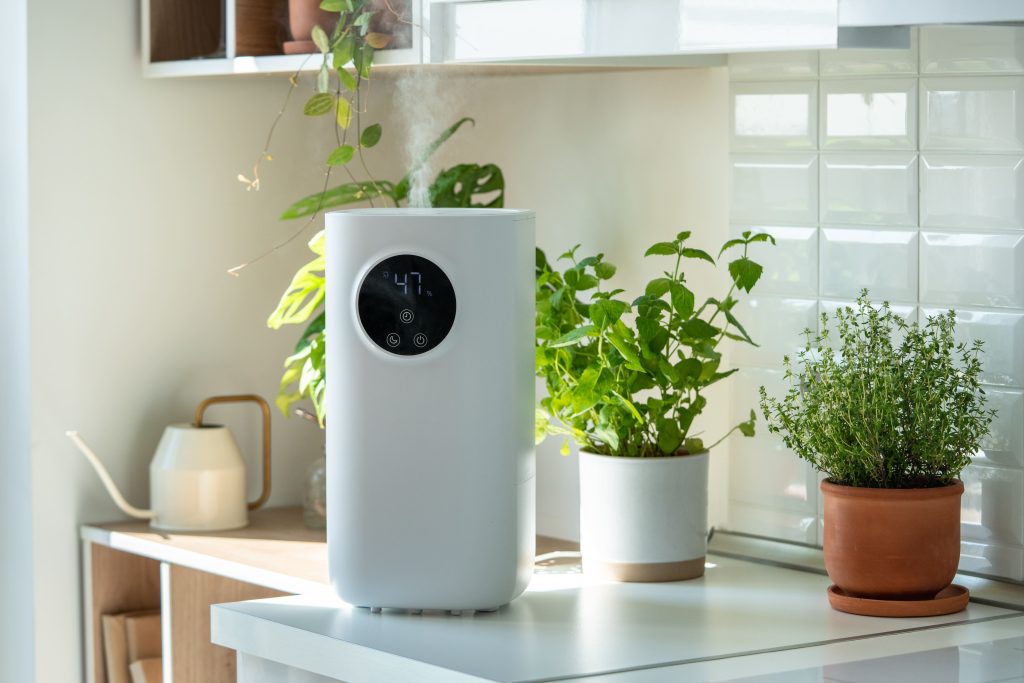
The Primary Cause Of Indoor Air Problems
While every home is unique, a dominant contributing factor to poor indoor air quality exists ubiquitously across all – inadequate ventilation. This lack of proper air exchange prevents the dilution of indoor air pollutants, creating an unfavorable indoor environment.
Insufficient outdoor air circulation into indoor spaces increases the concentration of pollutants, including allergens, VOCs, and radon. It exacerbates the invisible indoor air pollution problem, creating possible health repercussions.
According to the Occupational Safety and Health Administration, when we breathe this polluted air, our bodies react similarly to how they would respond to a physical injury. These reactions range from immediate effects, such as irritation or a cough, all the way to chronic health problems over time, posing severe occupational safety and health concerns in homes, offices, and other indoor spaces.
Exploring Other Potential Factors Contributing To Indoor Air Problems
Other factors aside from inadequate ventilation indirectly contribute to poor indoor air quality. Activities like smoking, the use of fireplaces, burning candles, and even cooking can introduce pollutants into the indoor environment. Secondly, building materials, cleaning products, and personal care items can release harmful chemicals.
Furthermore, uncontrollable factors such as climate, weather changes, environmental changes, and even the geographical location of the living space have a significant impact.
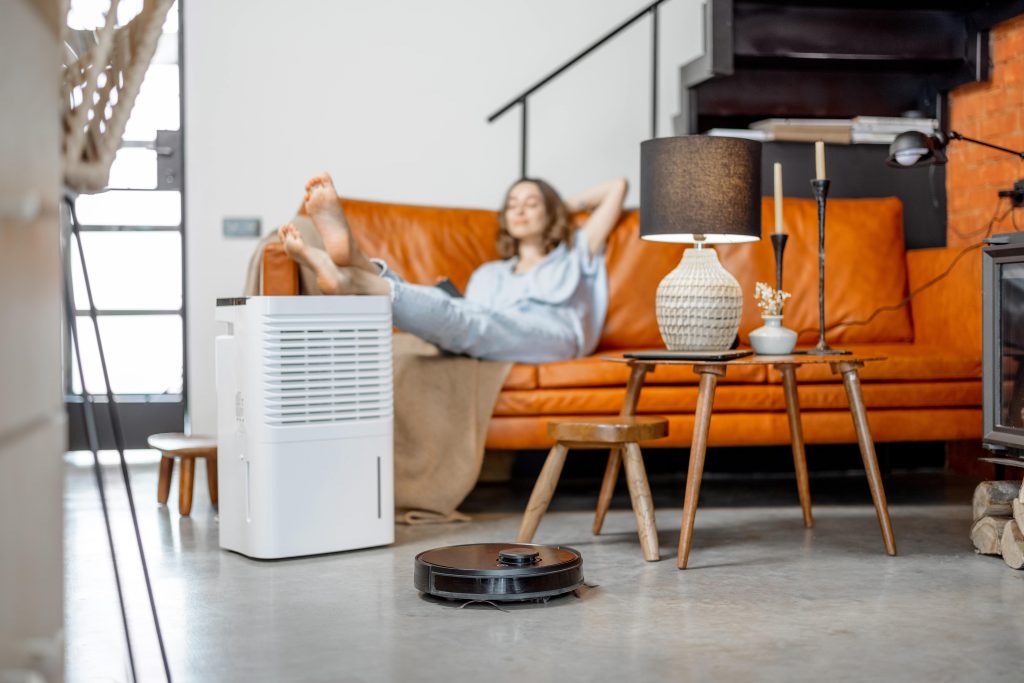
The Importance Of Good Air Quality
Indoor air contaminants can cause many health issues, from allergies to serious respiratory conditions such as asthma. Long-term exposure can even lead to heart disease and cancer. Aside from reducing the risk of long-standing health issues, improving the air quality in your home can result in:
- Improved Sleep: Air pollutants can cause respiratory or nasal congestion and disrupt sleep. Cleaner air enhances your breathing and, ultimately, your sleep quality.
- Increased Comfort: Removing odors and pollutants creates a fresher, more comfortable indoor environment.
- Improved Lung Health: Clean air minimizes stress on your lungs, hence reducing long-term health risks.
- Improved Productivity: Good air quality is not just a health matter; there’s a correlation with productivity too.
Factors Contributing To Poor Indoor Air Quality (IAQ)
Numerous factors contribute to poor indoor air quality. These typically range from issues related to ventilation, the presence of certain materials and substances, and various activities that individuals engage in. Here are some of the most common factors that can negatively affect the IAQ:
- Limited Ventilation: Lack of adequate ventilation can trap pollutants inside, leading to air contaminant buildup. This is particularly prevalent in energy-efficient homes that are sealed tight for better heat retention.
- Humidity: High humidity levels can foster the growth of mold, mildew, and dust mites. In contrast, extremely low humidity levels can lead to issues like dry mucous membranes and skin.
- Indoor Allergens: Common indoor allergens include pet dander, dust mites, and mold spores. These particles can become airborne and inhaled, causing allergic reactions and asthma attacks.
- Chemical Pollutants: Chemical pollutants can come from various household products, including cleaning supplies, air fresheners, and paints. Many of these products release Volatile Organic Compounds (VOCs), which can be harmful when inhaled.
- Combustion Pollutants: Burning materials for heating, cooking, or smoking produces combustion pollutants. These include carbon monoxide, nitrogen dioxide, and particulate matter, all of which can have negative health effects.
- Building Materials And Furnishings: Certain building materials, such as asbestos and lead-based paints, can release harmful particles into the air. Similarly, new furniture or flooring can emit VOCs, particularly when they are initially installed.
- Personal Activities: Activities like smoking, cooking, burning candles, or using unvented heaters can all contribute to indoor air pollution.
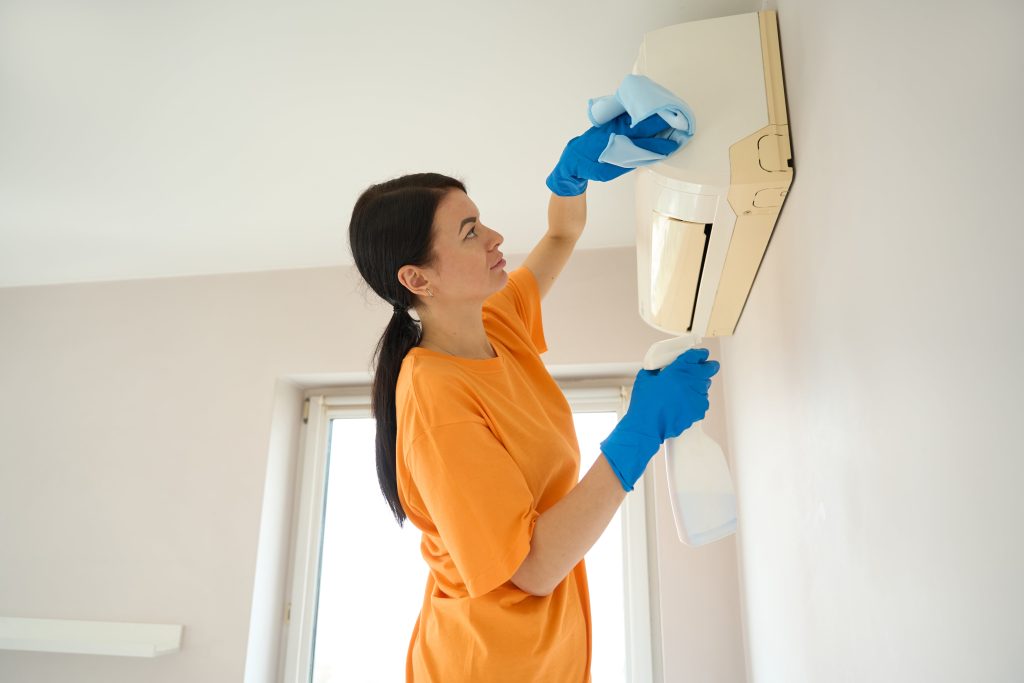
Your Indoor Environment: The Role It Plays In Indoor Air Quality
Your indoor environment is not merely a shelter from the elements; it’s a dynamic ecosystem affecting your health in more ways than one, with a significant element being the air quality within and around. Notably, indoor sources of pollution contribute significantly to poor air quality. Common indoor air pollutants like dust, mold, pet dander, secondhand smoke, pollen, and more occupy your space, mixing with the air you breathe indoors.
For instance, maintaining a high air exchange rate, where enough outdoor air enters your home, can help dilute the pollutants and improve air quality. On the contrary, inadequate ventilation and an insufficient supply of outdoor air can increase indoor levels of pollutants, triggering air quality problems.
Furthermore, indoor moisture levels leading to damp indoor environments, heating and air systems, or activities such as smoking or cooking can create or contribute to indoor air problems. Even innocent-seeming products like air fresheners or cleaning agents can release particles into the air, impacting the air quality inside.
The Importance Of Maintaining A Clean Indoor Environment For Better Air Quality
Ensuring a clean indoor environment isn’t a luxury; it’s necessary for good health and well-being. With the indoor environment playing a critical role in maintaining and determining our health status, we must do our part to reduce indoor air pollutants.
One of the necessary actions involves a consistent cleaning regime. Regular dusting and vacuuming can drastically reduce the pollutant levels indoors. Moreover, ensure that your heating, ventilation, and air conditioning (HVAC) system is well-maintained and clean. A clogged air filter cannot effectively trap pollutants, thus worsening your indoor air quality.
Furthermore, incorporating plants into your home decor isn’t just aesthetically pleasing; certain species can also purify your air. Using natural products for cleaning, ensuring proper ventilation, and maintaining a moderate indoor humidity level can improve indoor air quality.
How To Improve Air Quality In Your Home And Maintain It
Improving indoor air quality doesn’t necessitate monumental changes but rather sensible ones. Start by maximizing the amount of outdoor air in your indoor spaces. Use existing ventilation systems, open windows, and doors when possible, and operate attic or window fans to increase the infiltration of outdoor air.
Avoid smoking indoors, as tobacco smoke is a significant source of indoor air pollution. Also, keep your home clean. Regular vacuuming can reduce pollutants that accumulate in dust and are present in carpets.
Limit the use of products that emit Volatile Organic Compounds (VOCs), such as certain cleaning substances, air fresheners, and paints. Opt for natural and unscented products to minimize releasing these pollutants into your indoor environment.
Advanced Techniques And Tools For Monitoring Indoor Air Quality
Investing in advanced tools allows you to monitor and effectively manage your indoor air quality. Air purifiers can help reduce pollutants in indoor air. Those equipped with High-Efficiency Particulate Air (HEPA) filters are particularly effective.
Carbon Monoxide and radon detectors are also invaluable tools. They alert you about the presence of these harmful substances before they reach dangerous levels, allowing for immediate response and ventilation. Indoor air quality monitors are another excellent investment. They measure pollutants, temperature, and humidity levels, delivering real-time insights about your indoor environment.
Maintenance Tips For Sustained High-quality Indoor Air
Consistency is key to sustaining high-quality indoor air. Maintaining your ventilation system, for instance, is crucial. Ensure the filters are cleaned or replaced frequently to prevent them from becoming a source of indoor pollution.
Regular home cleaning is also essential. Clean carpets, upholstery, and other surfaces to prevent dust and allergens from building up. Try maintaining a moderate humidity level in your home since too much can lead to mold, and too little can cause respiratory problems.
Indoor air quality carries immense weight. Some threats are conspicuous, such as second-hand smoke, while others are covert, like radon gas; regardless, each pollutant adversely impacts your health. Exposure to indoor air pollutants, be it long-term or short-term, can trigger immediate reactions or even long-term health effects.
Indoor air pollutants range from biological sources like mold and pet dander to chemical pollutants such as volatile organic compounds (VOCs) coming from various household products. These pollutants oftentimes have more concentrated levels indoors than outdoors, increasing our exposure and potential harm. Poorly ventilated areas can inadvertently amplify the effects of indoor pollutants — often leading to pronounced health implications.
Specific Health Conditions Linked To Poor Indoor Air Quality
Poor indoor air quality has been attributed to numerous health conditions. Asthma, for instance, can be exacerbated by exposure to various indoor pollutants, such as dust mites, pet dander, and mold. Similarly, allergies can also be triggered or aggravated by these allergens present in the indoor environment.
Long-term exposure to certain indoor air pollutants, like radon and second-hand smoke, has been linked to lung cancer by leading health institutions, including the American Lung Association. Similarly, chronic obstructive pulmonary disease (COPD) can be exacerbated by many indoor pollutants.
Moreover, VOCs, commonly found in many household products, can cause symptoms ranging from throat irritation and headaches to more severe conditions such as liver or kidney damage.
How Improving Your Indoor Air Quality Can Improve Your Health
You can create a healthier and safer living environment by improving indoor air quality. Here’s how enhancing your indoor air quality can lead to better health:
- Reduced Allergies And Asthma Symptoms: By minimizing common indoor allergens like dust mites, pet dander, and mold, you can substantially reduce allergic reactions and asthma symptoms.
- Lower Risk Of Lung Cancer And Heart Disease: By reducing exposure to carcinogens like radon and secondhand smoke, you can decrease your risk of lung cancer. Moreover, reducing fine particulate pollution can lower the risk of heart disease.
- Better Respiratory Health: A less polluted indoor environment can minimize the risk of developing respiratory conditions and strengthen your overall lung health.
- Improved Sleep: Clean air can significantly improve sleep quality. Air pollutants can trigger respiratory issues that can disrupt sleep.
Tips To Improve Your Indoor Air Quality
Follow these tips to improve your indoor air quality:
- Regularly Clean And Vacuum Your Home: Keeping your home clean is essential to avoid dust, pet dander, and other particle build-up. Regular vacuuming with a HEPA filter can efficiently eliminate pollutants from your indoor environment.
- Maintain Proper Ventilation: Proper ventilation is vital for maintaining a healthy indoor environment. Ensure the use of exhaust fans in the kitchen and bathroom to remove moisture and cooking fumes. Where possible, open doors and windows to let fresh air circulate.
- Monitor And Control Humidity Levels: Excess humidity can lead to mold and mildew growth, harming your health. Use a dehumidifier or air conditioner to maintain indoor humidity levels between 30-50%.
- Avoid smoking indoors: Tobacco smoke is a significant indoor air pollutant and should be avoided within your home environment.
- Choose Low-VOC And Chemical-Free Household Products: When selecting cleaning products, look for natural or low-VOC options to reduce the chemicals released into your home’s air.
- Add Indoor Plants To Your Home: Indoor plants add beauty to your space and can help improve air quality by absorbing pollutants such as formaldehyde and benzene.
- Use Air Purifiers: Equip your home with an air purifier equipped with a HEPA filter to help capture pollutants and provide cleaner air circulation.
Information On Indoor Air Quality: Resources And Recommendations
Improving indoor air quality is essential to maintaining a healthy living environment, especially since we spend most of our time indoors. Numerous resources are available to help you better understand the intricacies of indoor air quality and how it influences our lives. Here are some credible sources to turn to:
- Jurassic Mold – Indoor Air Quality: The Jurassic Mold offers extensive information on indoor air quality, including tips to improve it and data on the health impacts of indoor pollution.
- World Health Organization (WHO) – Indoor Air Quality Guidelines: The WHO has published guidelines on improving indoor air quality to help reduce the risk of health problems associated with poor indoor conditions.
- Occupational Safety And Health Administration (OSHA): OSHA provides guidance on maintaining healthy indoor spaces in the workplace, ensuring the safety and well-being of employees.
How To Stay Informed On The Latest Information On Indoor Air Quality
Staying updated on indoor air quality can be crucial to protecting your well-being. Here’s how you can remain informed:
- Subscribe To Newsletters: Numerous organizations and experts offer newsletters on indoor air quality, providing the latest findings, research, and developments.
- Follow Industry Experts On Social Media: Connect with indoor air quality experts on social media platforms (e.g., LinkedIn, Twitter) for real-time updates and insights.
- Participate In Webinars And Conferences: Webinars and conferences dedicated to indoor air quality, occupational safety, and health can help inform you on best practices and the latest advancements.
Taking Control Of The Air Quality In Your Home
Taking control of the indoor air quality in your home can significantly improve your well-being and health. Improving indoor air quality does not have to be an overwhelming task. Begin by identifying and eliminating sources of indoor air pollution, such as tobacco smoke, household chemicals, and air fresheners. Achieve a healthier indoor environment by ensuring adequate outdoor air flows inside through good ventilation practices regulated by the EPA’s indoor air quality standards.
Staying proactive in your approach to improving indoor air quality is ultimately the best way forward. Regularly maintain heating and air systems, periodically check for damp spots as these can lead to mold growth, and when using products known to emit pollutants (like certain paints or cleaning supplies), ensure efficient outdoor air ventilation.
Taking control of the air quality in your home is taking control of your health. Ensure you have the best indoor air quality, as every breath counts.
Making a Jurassic Difference
Request a reliable, professional inspection and indoor quality test.
Serious Conditions
Prolonged exposure to mold can lead to more severe health issues such as:
- Chronic sinusitis
- Chronic respiratory infections
- Allergic bronchopulmonary aspergillosis
- Hypersensitivity pneumonitis
- Severe asthma attacks
Invasive mold infections (primarily affecting those with weakened immune systems)
To protect your health and maintain better air quality, it’s vital to remove mold from your home or business promptly. Regular mold inspection and testing can help identify mold infestations early, allowing you to address the issue before it worsens.
Professional mold remediation services, like those offered by Jurassic Mold, specialize in thorough mold removal and cleanup, helping combat mold damage and promote healthier indoor air quality. By employing experts in mold remediation near you, you can safeguard your property and well-being, ensuring that mold exposure doesn’t pose a risk to those on your premises.
What Contributes To Mold Damage?
Addressing mold damage requires a deep understanding of conditions that encourage mold spores to thrive. This knowledge gives you the power to disrupt their growth cycle in your home or business, ensuring healthier air quality. Here are some main contributing factors and potential signs of mold presence:
- Dampness and Humidity: Mold spores favor damp, moist places. A leaky pipe, for instance, will provide perfect breeding grounds for mold, often leading to water damage.
- Poor Ventilation: Limited airflow in your environment creates a hospitable atmosphere for mold. Areas with poor ventilation, like bathrooms, basements, or tightly shut rooms, are more vulnerable to mold growth.
- Musty Odors: Odors are significant early warning signs. A persistent musty whiff suggests the presence of mold, even if it’s not visibly apparent.
- Visual Signs: Keep a lookout for damp spots, peeling paint, or discolored patches on walls and ceilings. Physical mold growth might also be evident and can appear in varying colors, ranging from black to green to blue.
The silent intrusion of mold in your spaces can compromise structural integrity and pose severe health risks. Regular mold inspections could provide initial detection, but professional mold testing undoubtedly grants accurate results.
Dealing with the root cause, such as water damage, is a step closer to mold-free premises. Services for damage restoration can help in promptly addressing these issues. Removing mold from your residence or business elevates air quality and reduces potential health threats. Prioritize contacting a trusted mold remediation firm near you at the earliest sign of mold damage.
No pressure, No hassles
We’re licensed, insured, certified, and 100% focused on mold and air quality
Common Health Risks Associated With Mold Exposure
Mold exposure poses various health risks, from mild to severe, depending on individual susceptibility and the type of mold present. The most common health risks associated with mold exposure include:
- Allergic Reactions: Sensitive individuals may experience various symptoms upon exposure to mold spores, including red, itchy eyes, congested or runny nose, skin irritation, and sneezing. These allergic reactions arise as the immune system reacts to mold in your home or business.
- Asthma Attacks: Mold can exacerbate respiratory conditions like asthma. Mold spores in the air may trigger an asthma attack, manifested by wheezing, chest tightness, shortness of breath, and coughing. Asthmatic individuals must be particularly cautious about the air quality in their surroundings.
- Mycotoxicosis (Mold Poisoning): Exposure to toxic molds like Stachybotrys chartarum – also known as “black mold” – may cause mycotoxicosis. This condition posits serious health risks, including neurological problems, respiratory issues, internal bleeding, and death in severe cases.
To protect the health of those in your home or business, immediately address any signs of mold damage with professional mold remediation and cleanup. Mold removal services inspect, detect, and eliminate mold, preventing the exacerbation of water damage, erosion of air quality, and potential health risks. Employing mold remediation services near you ensures the restoration of a safe environment for all.
Stay vigilant with regular mold testing and hire experts to remove mold and safeguard your well-being. Don’t let mold exposure compromise the health of yourself or your loved ones; take action today.
Professional Mold Remediation: Why Mold Removal Is Necessary
Mold infestations within your home or commercial space can harm your property’s value and health. Handling mold problems effectively requires professional mold remediation services’ expertise and advanced equipment. Here’s why involving a professional mold remediation company is paramount:
- Experience & Knowledge: Dealing with mold grows increasingly complex with varying mold types, including the notorious black mold. Professional mold remediation experts possess comprehensive knowledge and training, ensuring the mold removal process is seamless and efficient.
- Advanced Equipment: Companies near you specialize in mold remediation with necessary equipment like HEPA vacuums, air scrubbers, and drywall. They remove contaminated materials and address the water source, thus tackling the issue at its root.
- Averting Cross-Contamination: Professionals use meticulous techniques to prevent mold from spreading to other areas in your home or business during restoration. This is vital in eliminating lingering mold risks and improving indoor air quality.
- Health & Safety: Mold exposure poses various health risks to those allergic to mold or compromised immunity. Professionally addressing mold problems ensures that individuals residing or working in the space are not exposed to the adverse effects of mold.
- Certified & Trusted: Engage with a Better Business Bureau directory of mold remediation to choose a top-rated company supported by genuine customer reviews. Prioritize screened and approved remediation service providers for the best results.
Only a well-equipped, experienced mold remediation company can effectively tackle mold damage restoration, safeguarding your property and health. Reach out and give us a call today at Jurassic Mold for timely assistance and thorough mold cleanup, ensuring your environment is mold-free and safe.
The Prevention And Removal Of Mold
Preventing and removing mold can safeguard your home or business from mold damage, maintaining a healthy environment. Here are some crucial approaches:
- Controlling Humidity & Ventilation: Moisture fuels mold growth. Using air conditioners, dehumidifiers, or exhaust fans to regulate humidity and improve indoor air ventilation can restrict mold formation. Make sure to fix leaky pipes or roofs, regularly clean your HVAC system, and dry any waterlogged areas within 24 hours to keep mold at bay.
- Mold Removal Methods: Remove visible mold growth from non-porous materials – for instance, glass, metal, or plastic, using soap and water or a mild bleach solution. Porous materials like carpet or drywall may need to be replaced if they harbor mold. Always use gloves and masks to avoid mold exposure during the cleaning process.
- Seeking Professional Help: If the mold issue is extensive (covering more than 10 sq. ft), impacting your health, or hidden behind walls/floors, it’s best practice to hire professional mold remediation experts. Professional cleaning is also recommended after significant water damage or flooding.
The mold remediation process could involve several steps – thorough assessment, mold containment, use of advanced equipment like HEPA vacuums or air scrubbers for mold removal, and preventive measures to deter future growth.
With myriad mold remediation companies near you, choosing a reliable and efficient service becomes essential. Professionals at Jurassic Mold use specialized equipment to quickly and safely tackle mold infestations in homes or commercial establishments.
Opting for professional mold removal ensures that the mold problem is handled meticulously, safeguarding your home’s best shape and your health. So, don’t let mold persist.
Contact us today to get the help you need!
Final Thoughts!
Understanding the health risks associated with mold exposure is not just crucial—it’s a lifeline for a healthier home or business. Risks and prevention go hand in hand, as recognizing the dangers of mold can prompt you to adopt strategies for its containment.
A clean, dry environment is your most formidable defense against mold propagation. However, it’s time to turn to professionals at Jurassic Mold when water damage strikes, triggering mold growth.
The terms ‘mold remediation’ and ‘mold removal’ become essential to your vocabulary. These are not just services, they represent comprehensive solutions, mapping the path from detection to cleanup. Remediation experts engage in meticulous mold testing and inspection, revealing the unseen damage inflicted by mold spores.
As you encounter persistent issues hinting at an underlying mold infestation, consistent musty odors, unexplained health effects, or a decline in air quality, let this be your clarion call to gear up for action.
Remember, no silver lining exists to a cloud of mold spores. Only a call for damage restoration. Prevent, tackle, and remove mold; be proactive and ensure a timely cleanup. Stay ahead of mold and safeguard your world, brick by brick.
